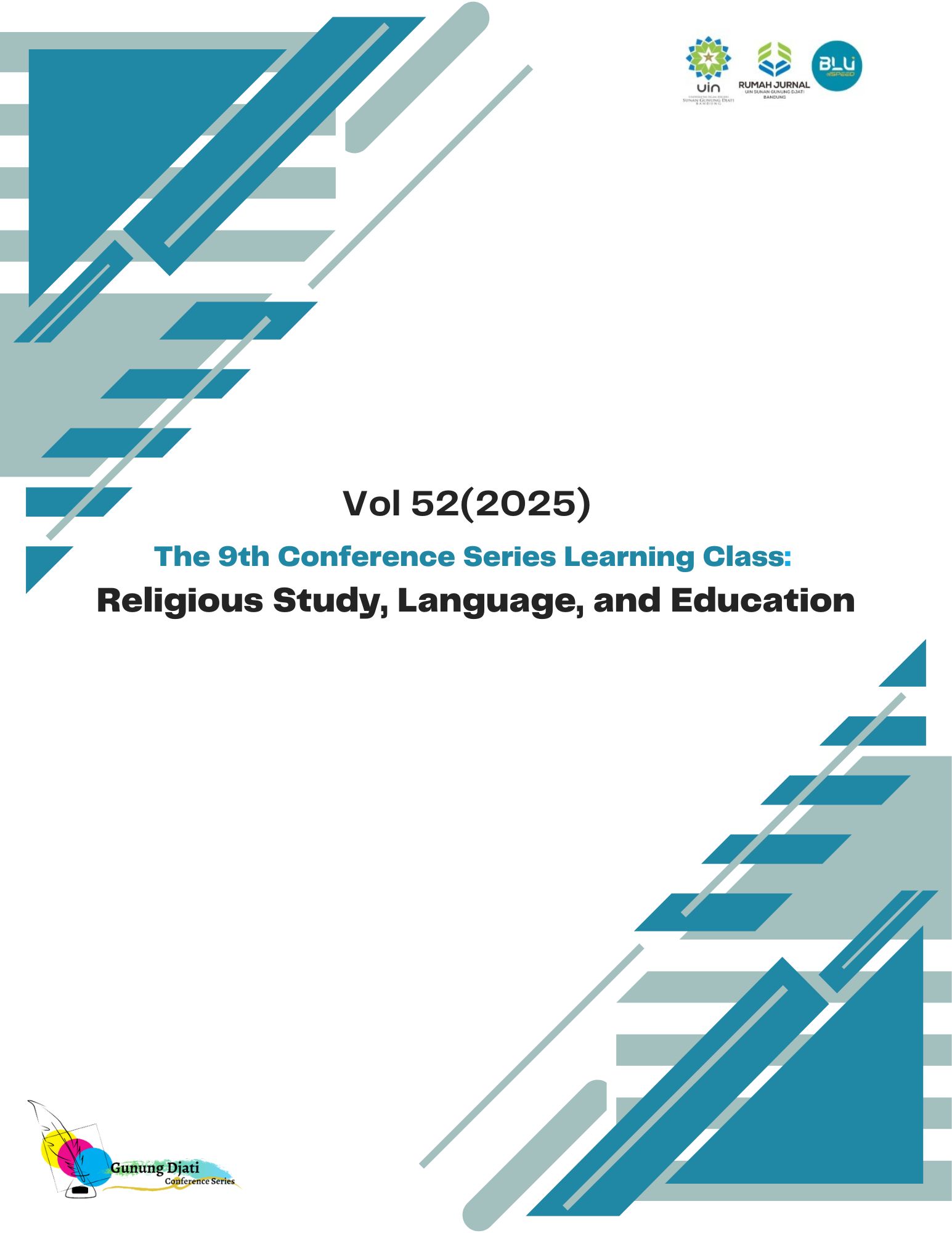Human Body Anatomy and Physiology Module Using Case Method for Biology Students
Keywords:
Development Module, Anatomy Physiology, Case Method.Abstract
The purpose of this study was to describe the structure of the developed case-based human anatomy and physiology module. To determine the responses of the lecturers in charge of the course to the case-based human anatomy and physiology module. To determine the students' responses to the case-based human anatomy and physiology module. The development research method is a type of research that produces a product rather than testing a theory. The results of this study: the developed case-based human anatomy and physiology module has been declared feasible (4.35) based on the assessment of material experts, reviewed from the content and presentation aspects of the material. The lecturers in charge of the course gave a positive response to the case-based human anatomy and physiology module (4.36), reviewed from the indicators of ease and effectiveness/benefit. Students of the biology study program, FMIPA UNIMED, class of 2021, gave a positive response to the case-based human anatomy and physiology module (4.13), reviewed from the indicators of interest, ease and effectiveness/benefit.
Downloads
References
Aji (2019). Learning to read in the 21st century using exploration-based methods. Ternodika - Journal of Educational Research 17(2):70–84.
Amthari, D. Muhammad, and E. Anggereini (2021). Research-based e-LKPD on the human respiratory system for grade 11 high school students. BIODIKA: Scientific Journal of Biology Education, 07(03), 28–35.
Andayani, E., Mustikowati, R.I., Wahyu, S., Setiyowati, and Firdaus, R.M. (2022). Case Study Method: 21st-century MKKM optimizes critical thinking, creativity, communication, and student participation. Journal of Social Science Research and Education (16(1)): 52–60.
Arpizal (2021). Taxation course, Economics Education Curriculum, Faculty of Teacher Training and Education, University of Jambi, uses case-based learning to improve tax understanding. Proceedings of the UNIMUS National Seminar, 4:665–673.
Azka, HH Al, Setyawati, RD, Albab, IU (2019). Creating a learning module. Imajiner: Journal of Mathematics and Mathematics Education, 1(5), 224–236.
Cahyadi (2019). Development of open materials based on ADDIE. Halaqa Journal of Islamic Education 3(1):35–43.
Cristiana, DI, Anjarini, T., and Purwoko, RY (2021). Development of a contextual elementary school science course on temperature and heat. SITTAH: Journal of Elementary Education, 2(2), 145–160.
Daryanto (2013) Open lecturer training module. Yogyakarta: Gava Media. STI Siamora and S. Edi (2023). Comparison of student learning outcomes using the TGT and STAD cooperative learning models. Pelita Pendidikan Journal 11(1):9–16.
Fatihah, NN Mulyaningsih, and IAD Astuti (2020). A motion dynamics training module based on new discoveries. JPFT 6(2):175–182.
Firdaus and Mukhaiyar, R. (2021). Question manual for basic electricity and electronics subjects in vocational high schools. Journal of Pedagogy and Learning, 4(1), 192–201.
Hadiyanti, AHD (2021). Development of a flipbook-based digital science learning module for online learning in elementary schools. Jurnal Elementaria Edukasi, 4(2), 284–291.
Harahap, EP, and Yusra, H. (2022). Application of case study learning through observation and research as a means of developing dialogic teaching materials in classroom forums. Jurnal Bahasa Indonesia Prima (BIP), 4(1), 26–34.
Harahap, I.H., Restuati, M., and Hasairin, A. (2020). Analysis of students' critical thinking skills, scientific literacy, and scientific attitudes in ecosystems. Proceedings of the 5th Annual International Seminar on Transformative Education and Educational Leadership, 488, 93–96.
Hasruddin, (2019). Innovation in science and biology learning to find solutions to environmental problems and achieve the Sustainable Development Goals. Proceedings of the National Seminar on Biotics, 8–13.
Hasruddin, Aryeni, and Amrizal, (2024). Designing a problem-based biology learning planning textbook. Indonesian Journal of Educational Research, 4 (1), 1–6.
Hasruddin, H., Aryeni, A., Amrizal, A., and Aulia, R. (2024). Developing analytical thinking in biology students through the implementation of biology planning textbooks. Proceedings of the 5th International Conference on Innovation in Education, Science, and Culture, ICIESC 2023, 1–6.
Hasruddin, H., Aryeni, A., & Arwita, W. (2022). The Effectiveness of Using Digital Textbooks in Assessing Biology Learning: A Course on Portfolio Assessment Materials. Bioedukasi, 20 (2), 26–31.
Hasruddin, H. and Aulia, R.N. (2023). Students' Scientific Reasoning Skills Through the RICOSRE Model on Environmental Change. JPBI (Indonesian Journal of Biology Education), 9 (3), 445–451.
Hasruddin, H., Harahap, F., & Mahmud, M. (2017). Developing a Contextual Inquiry Lesson Plan to Enhance Critical Thinking in Microbiology Students. OALib (Open Access Library Journal), 04 (e3943), 1–11.
Hasruddin, Harahap, F., and Mahmud. (2018) The Effectiveness of Applying Contextual Microbiology Tools in Developing Higher-Order Thinking Skills in Biology Students at Unimed. BIOEDUKASI: Journal of Biology Education, 11 (1), 51–54.
Imran, A., Amini, R., and Fitria, Y. (2021). Development of a Science Learning Module Based on the 5E Learning Cycle Model in Elementary Schools. Basicedu Journal, 5 (1), 343–349.
Jamaludin and Alanur, SNS (2021). Developing Civics Knowledge and Information Literacy During the COVID-19 Pandemic Using the Case Method for Pancasila and Citizenship Education Students. Journal of Citizenship Education, 11 (01), 28–36.
Jehan, D. Octaria, and A. Syahbana (2021). Development of a CTL-Based Circular Electricity Module Assisted by Geogebra. Indonesian GeoGebra Journal 1(2):60–67.
Kibtiah, Hilmiyati, and Khaeroni published. A thematic learning module for grade 4 based on contextual character education. Ibtidai Elementary Education Journal 7(2):105–118.




